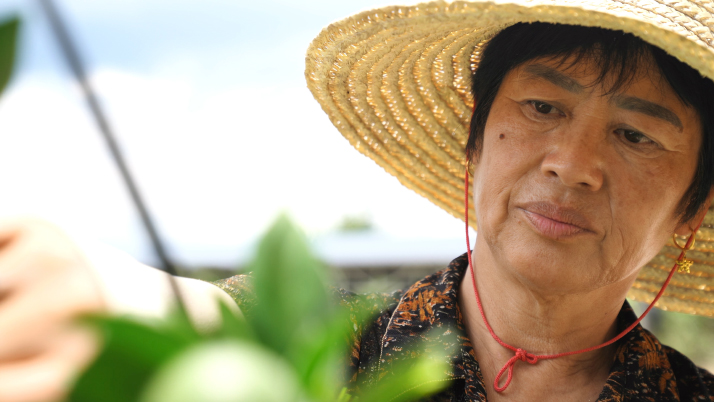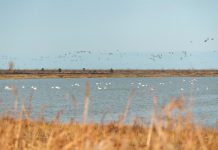When Ma Xuemei first visited her husband’s hometown in Changting County, Fujian Province, in 1986, she was shocked by its barrenness. “Except for some lowlands dotted with a type of fern, the area was covered by weathered stones.” Little did she know, Changting, her new home, was once notorious for soil erosion, listed among China’s most severely affected regions.
In 1942, Chinese scholar Zhang Mutao described a bleak scene in Changting: “The surrounding hills are all red… Trees are a rare sight… There are neither humming insects nor scurrying rats, let alone flying birds.”
Despite early efforts in the 1940s to control soil erosion, visible changes were scarce. Remote sensing data revealed in 1985 that 31.5 percent of Changting’s land had succumbed to this environmental menace, with barren red-earth hills resembling flaming mountains and poor soils leading to poverty.
In 1983, recognizing the severity of the issue, Changting was designated as a provincial-level pilot area for soil erosion control. That was shortly after China launched the reform and opening-up policy, under which farmland is contracted to rural households. Local farmers were contracted to revitalize the land by cultivating wasteland, planting trees, and preventing soil loss. Ma, who lived in Yuandang Village, Changting of Longyan City, joined the greening effort.
From red to green
According to Ma, frequent wars in the mid-1800s and destructive lumbering in the following decades were among the reasons for Changting’s barrenness. “Local residents were poor and chopped down trees for firewood. When there were no more trees, they began using bushes and grasses, destroying local vegetation,” Ma told Beijing Review.
After she joined the project, the first urgent task for Ma was to restore the vegetation on the land contracted to her family. Ma invested all her savings and planted 10.5 hectares of Chinese chestnut trees in 1999, in the hope of greening the land and making a profit at the same time. Unfortunately, all of the saplings were washed away by heavy rains in the following spring. “When it rained, some unstable topsoil was washed away. The muddy stream ran down, becoming wider and wider,” Ma recalled.
Her husband and coworkers tried persuading her to quit planting chestnut trees, as few people had succeeded in greening the unstable soils. Some villagers even mocked her that they’d be getting very old before the chestnut trees mature. But rather than giving up, Ma asked for help from agricultural experts.
The experts suggested Ma green her land in reverse order: First, plant grass to stabilize the topsoil, then bushes, then finally, trees. “This worked much better, the topsoil was stabilized,” Ma said. Ma was able to successfully grow more cash crops, including Chinese chestnut, pear and peach in the following years.
Later, Ma raised some pigs and chickens to produce fertilizer. “Free-range chickens eat and poo wherever they go. I don’t need to buy fertilizer as an eco-friendly cycle has been put in place,” she said. After five years of effort, Ma’s trees began bearing chestnuts, and when she shared them with the other villagers, her eyes welled up with tears of joy.
In the following years, she continued her greening efforts. “I planted 7,000 navel orange trees in 2020. They are growing well, and are just as good as those growing in more fertile soils. This means that the former wasteland has transformed into a fertile area,” Ma said.
Now, Changting has many farmers like Ma, who have continued to green the land with trees and grass over the past four decades, and shaken off absolute poverty by cultivating and selling forest by-products. The once flaming mountains have been turned into gardens of flowers and fruit.
As of 2022, the portion of Changting’s eroded soil had decreased to 6.57 percent, while vegetation coverage in the previously affected areas had increased from the previous range of 10 to 30 percent to a range of 77 to 91 percent.
The number of bird species in the area has also grown from 100 to 306, and overall biodiversity, too, is on the up. Today, Changting continues to not only green its land, but also optimize its vegetation.
“Changting has greened most of its barren red-earth hills, and large-scale water and soil conservation has been completed,” Lin Gengen, a senior engineer of Changting Water and Soil Conservation Center, told Beijing Review. He added that its ecosystem is in a preliminary restoration phase, and is still quite fragile; they are now planting broad-leaved trees in the existing coniferous forests, which enhances their capacity to prevent soil erosion.
In 2021, China’s Ministry of Natural Resources released 18 solutions for ecological conservation and restoration at a subforum of the United Nations Biodiversity Conference. Changting’s experience in soil erosion control was one of them. –The Daily Mail-Beijing Review news exchange item





